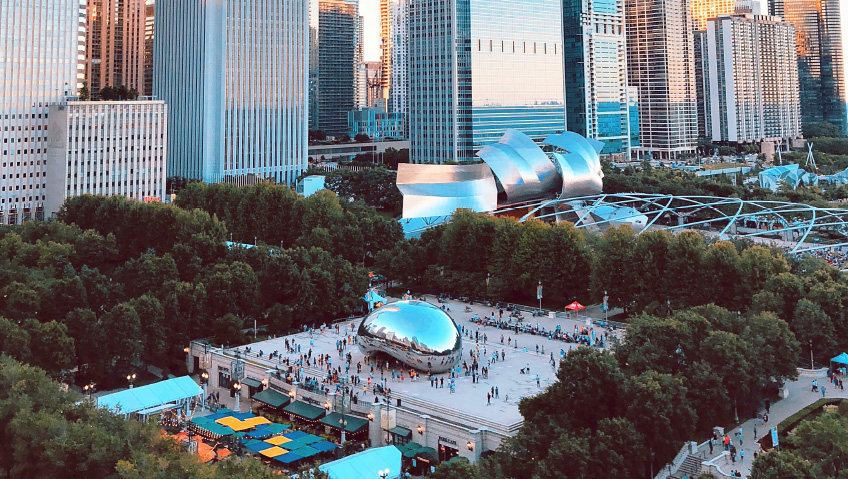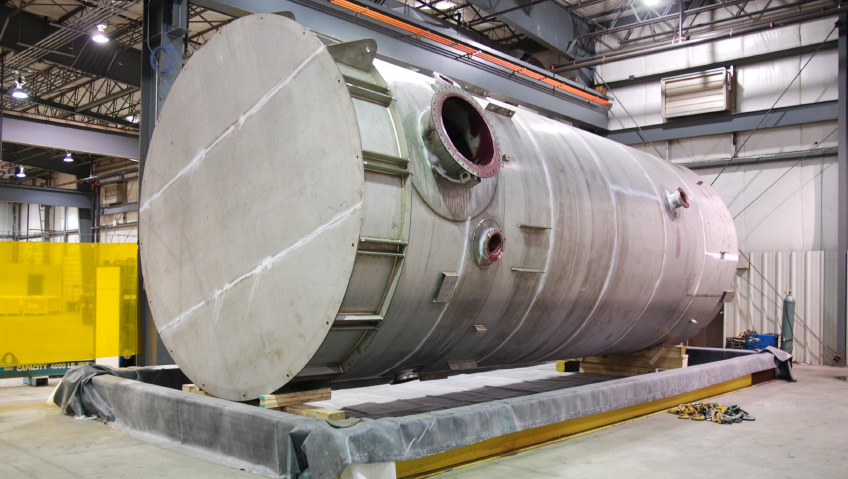Chicago, Illinois, on the southwestern shores of Lake Michigan, is a charming, verdant, and towering place with a rich and colorful history. Today, the kaleidoscopic metropolis and its surroundings, fondly known as Chicagoland, have evolved into an economic powerhouse poised to soar into the future as America’s latest technological hub. World Business Chicago is the team behind the scenes working to help turn this city’s many aspirations into reality.
When World Business Chicago came to life through the vision of Mayor Richard M. Daley 25 years ago, it was intentional about the change and evolution the organization wanted to witness in its time. As Chicagoland is one of the three top economies in the United States and number 2,122 in the world, the organization aims to expand the economy to $1.4 trillion by 2034. The goal is set to be achieved by ensuring optimal inclusion across the region, improving overall prosperity for all, including historically disadvantaged groups.
With hard work etched into every square inch of this city’s dynamic landscape, Chicago’s most recent rise to success did not come overnight. Establishing the Economic Plan for Growth and Jobs in 2012, World Business Chicago knew that it was time to get local business and civic leaders together to craft a revised growth strategy informed by the prevailing zeitgeist. Chicago 2050 is the two-chapter plan it developed, the first of which was recently released. The strategy will serve as the city and region’s mission statement for building a bright, sustainable economic future. “Everybody should read it. It’s going to roll out throughout the years ahead,” says Andrew Hayes, Vice President and Director of Marketing & Communications.
Led by the question of what the city will be in 2050, the project entailed collaboration with locals and other stakeholders on what is working and what is not. Envisioning the city’s economic future naturally demanded a fresh look at housing, education, public spaces, transportation, industry, and every other aspect that contributes to its well-being, so the team interviewed over 300 individuals, gathering feedback and recording people’s points of view. This process was considered imperative to the plan’s success.
“Chicago 2050 is a roadmap to turn our structural strengths into measurable outcomes,” says Phil Clement, President & CEO of World Business Chicago. “Chicago delivers both scale and balance, with nearly $900 billion in regional output, the most diversified economy in the nation, and a talent pipeline of more than 145,000 college graduates each year. Together, these assets are powering what we call the ‘Wow! Corridor,’ representing $18 billion in transformative projects stretching from the Obama Presidential Center to Google’s new Midwest headquarters and O’Hare’s modernization,” he explains. “Through Chicago 2050, our focus is clear: accelerate growth, attract global capital, and strengthen the assets that make Chicago one of the world’s most reliable, resilient, and investable markets for long-term value.”
With technology evolving at lightning speed, the task remains complex. “Thinking through even five years ago, I couldn’t have told you what 2025 would look like when I was in 2020,” says Hannah Loftus, Vice President of Research. “We’re setting a big vision that will allow us to organize folks to rally around this vision that we can see the city moving toward.”
“We have really strong strategies in place that are guiding growth and expansion in Chicago,” Hayes agrees.
“At World Business Chicago, our goal is growth,” says Loftus. “We have a clear strategy to achieve that,” she says, underscoring the role of industry in the organization’s vision. “Our manufacturing industry is number two in the nation, both by the amount of goods that are produced and the number of people that are employed,” she tells us. “We’re maintaining that leadership status.”
Now, Chicago 2050’s first part of Chapter 1’s five-year approach focuses on its four legacy industries, namely manufacturing; transportation; logistics; and professional services, insurance, and finance. Some of the city’s largest employers, ensuring that these sectors are well-maintained and provided with everything they need in terms of technological and other infrastructure to continue growing is pivotal to economic security. Some considerations include how people work, when they work, and how they commute, if at all—and how to accommodate these needs in the most efficient ways possible.
“I’m proud to be leading one of the first strategies emerging from Chicago 2050—ChiForward, Chicago’s new front door for global investment,” says Charles E. Smith, Vice Chair, World Business Chicago, Founder/CEO, CS Insurance Strategies, Inc., a division of MMA. “This initiative is designed to drive impact across all communities, connecting capital not only to marquee projects downtown but also to transformative opportunities in neighborhoods and industrial corridors throughout the city. We’re building on strengths investors can quantify—like $295 billion in trade through O’Hare last year and access to a quarter of North America within a day’s drive. In a changing global economy, ChiForward will ensure that growth reaches farther, builds broader, and strengthens Chicago’s position as one of the world’s most reliable and accessible markets for investment and inclusive prosperity.”
By maintaining support for its strongest industries, Chicago is able to spread its wings and reach into promising new fields such as clean energy, quantum technology, life sciences, digital technology, and artificial intelligence. Its particular focus on clean energy and all things quantum drew PsiQuantum, a tech startup building quantum computers, to break ground here a little over a month ago in a dedicated space for this industry in the Illinois Quantum & Microelectronics Park (IQMP). The city is also committed to preparing a ready and able workforce in this field, from high school to the college and university levels, ensuring that any quantum-related companies looking to set down roots here have a top crop of professionals to choose from.
Creating quality employment options was part of the reason World Business Chicago worked to ensure that all Chicagoans have a voice in the city’s future. “We want everyone to have a stake in making Chicagoland the best place, where people want to be,” says Loftus. “As we’re thinking through economic development and growing our region, we’re imagining it through the eyes of people who want to live here.”
The organization also pays close attention to the well-being of residential areas located close to industrial zones. “We are making sure that as we’re attracting businesses, we’re growing those economies,” Loftus says, highlighting the team’s collaboration with universities to ensure that all demographics are thoroughly considered and accommodated according to their unique needs. World Business Chicago is also inviting architectural and civic groups into conversation at the famous Millennium Park on Randolph Street. “We really see this as the jumping off point for the next big idea,” says Hayes. Home to many proud educational institutions and blessed with a large and diverse population, Chicagoland has what it takes to continue building on the legacy of prosperity it inherited from its founders and all those who ceaselessly work toward its success.
The area’s hospitality to newcomers is noteworthy, and World Business Chicago welcomes businesspeople in need of support to set up and get settled in the city. As a result, the city’s downtown is the fastest-growing in the country. Home to its financial and professional services industries, it is not the only area with room for new arrivals, though—working closely with Chicagoland Economic Partnership, an alliance of seven surrounding counties throughout the region, the teams gladly do the legwork for new companies in search of the ideal property to establish their business. “Ultimately, we want companies to thrive here. They know what they need and we likely have what they need. We’ll make sure that those two are connected correctly,” Loftus says.
The rapid recent expansion of the city’s downtown is also due in part to its post-COVID-19 strategy which saw Chicago turn many of its empty office spaces into residential blocks, complete with affordable housing. These developments are especially popular amongst companies looking to retain a younger workforce alongside distribution and logistics facilities.
Perfectly positioned to connect with all sectors and industries across the city, World Business Chicago also works hard at identifying global audiences to invite into negotiations. To this end, it most recently sent delegations to Mexico and China in the hopes of garnering new trade partners for the city. “It’s a very powerful approach to prospecting,” Hayes says of its Sister City project. As part of these efforts, Chicago now has 28 international sister cities that act as bilateral economic development partners.
“We are an economic super region. Therefore, we are considering how we fit into the global economy on a world stage,” says Loftus.
Local giants are also paying attention, and the city will soon be home to Universal Studios’ permanent exhibit, Universal Horror Unleashed. The immersive experience will introduce visitors to the movie studio’s monsters from over the decades, complete with restaurants and other entertainment offerings. The building will be located in the city’s entertainment area on the West Loop, right opposite the new Bally’s casino. More exciting developments are currently under wraps but in the pipeline.
The city’s strategic location, alongside its international airport, ideal highway network, and proximity to waterways, make it ideal for business travel, warehousing, and distribution for companies looking to reach as much of America as possible. World Business Chicago also sees the city’s location as ideal for providing manufacturers with climate change resiliency. “We can reach around a quarter of the nation within one day’s trucking drive; 25 percent of freight goes through our railways; and in 2024, we traded $295 billion worth of goods through here,” Loftus says, confirming that figures place the city at number one in the country’s warehouse inventory race.
For World Business Chicago, there is only one way for the city to go. “We plan to grow the region into a $1.4 trillion economy and grow jobs to 1,000,005,” Hayes confirms. As Carl Sandburg described this breathtaking place in his timeless 1914 poem, Chicago, the city promises to remain every bit as proactive and future-forward as a century ago when he called it “Tool Maker, Stacker of Wheat, Player with Railroads and the Nation’s Freight Handler.” It is a formidable task, but one this team is greatly looking forward to executing.






